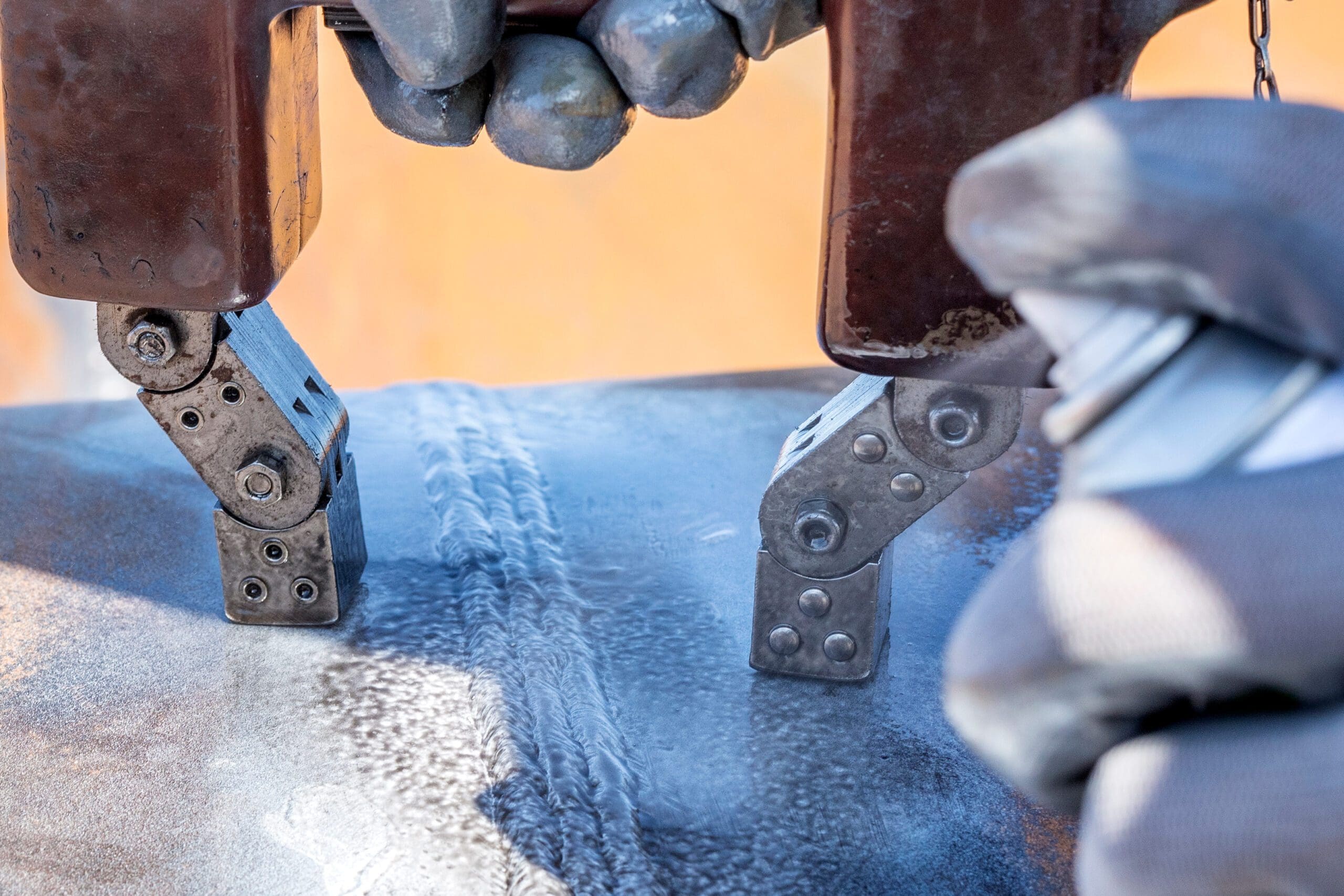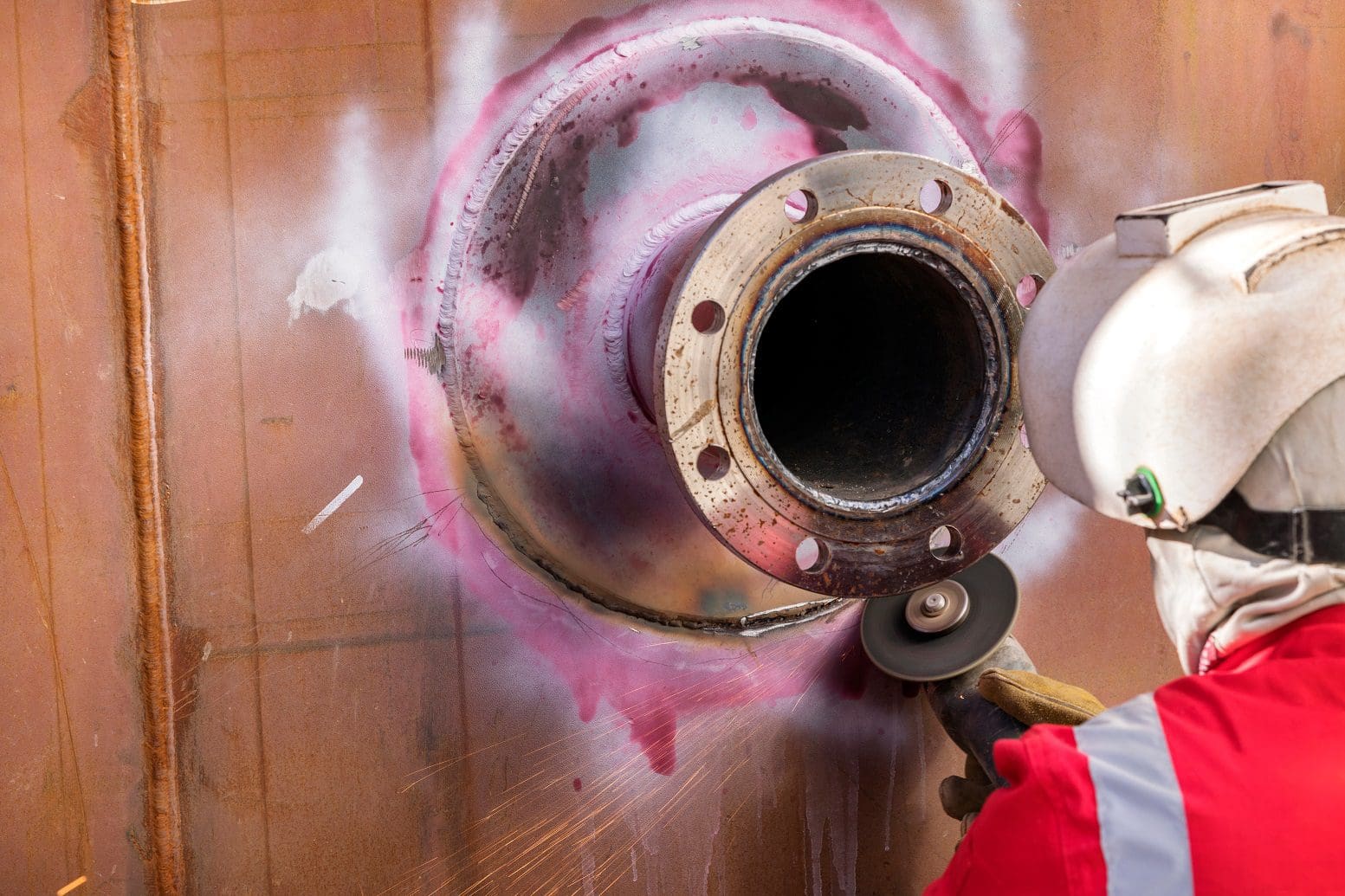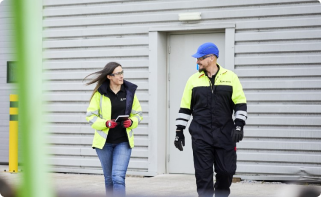
How do these tests work well together?
Each of these methods specialises in identifying different types of defects, and when combined, you gain multiple layers of insights into the condition of your assets and materials.
- Magnetic Particle Inspection is used to detect surface and near surface defects in carbon steel components. These types of defects could be cracks, laps, or any other surface-breaking defects in ferromagnetic materials.
- Dye Penetrant Testing is the preferred method for detecting fine cracks or small surface porosity in stainless steel and non-porous materials. It provides high sensitivity to surface-breaking flaws.
- Eddy Current Testing is highly effective for inspecting materials with a coating such as paint or plating. It can assess subsurface issues, such as corrosion or cracks, without removing the coating. This makes it ideal for applications where MPI chemical could cause contamination, such as in food and beverage plants.
By integrating these three testing methods, you get a comprehensive inspection process across various material types and conditions.

Our NDT tests in action: Real-life applications
These powerful NDT Methods are applied across a wide range of industries, where they help safeguard critical assets, ensure structural integrity, and prevent failures.
- Aerospace: Aircraft components undergo rigorous NDT testing to detect microscopic cracks in engine parts, landing gear, and fuselage structures, ensuring passenger safety and regulatory compliance.
- Oil and Gas: Pipelines and pressure vessels are regularly inspected to identify surface cracks, corrosion, and subsurface defects that could lead to catastrophic failures. Combining these NDT methods enhances safety and prolongs asset life.
- Manufacturing: Quality control in metal fabrication relies on these testing techniques to verify weld integrity and detect material flaws before products are delivered to customers.
- Power Generation: Turbines, boilers, and nuclear reactors require stringent inspections to prevent structural weaknesses and operational hazards. The combination of these methods provides an in-depth assessment of component durability.
- Automotive Industry: Vehicle frames, engine blocks, and suspension components are tested using NDT to ensure high performance and reliability before reaching the consumer market.
By implementing these testing techniques across multiple industries, organisations can enhance safety, optimise performance, and minimise downtime, ultimately leading to more cost-effective and reliable operations.
What are the benefits of combining Magnetic Particle Inspection, Dye Penetrant Testing, and Eddy Current Testing?
Enhanced sensitivity and reliability
While Magnetic Particle Inspection and Dye Penetrant Testing are mainly focused on surface defects, Eddy Current Testing can detect deeper flaws that may go unnoticed. This increases the overall sensitivity of the inspection process, leading to more reliable results.
Seamless integration
One of the greatest advantages of using these tests together is the seamless integration they offer. Combining all three methods into a single inspection process means there’s no need for multiple inspections. This streamlined workflow saves time, reduces costs, and minimises operational downtime – keeping your systems running smoothly and efficiently.
Testing expertise
Our NDT Technicians aren’t just skilled; they’re extensively trained and PCN Level 2 qualified for Non-Destructive Testing. This expertise ensures that every inspection is performed to the highest standards, providing you with the confidence that your components are being properly assessed for any potential defects.
 About BES Group
About BES Group Accreditations & Credentials
Accreditations & Credentials Our Environmental, Social & Governance
Our Environmental, Social & Governance Careers at BES Group
Careers at BES Group Our Senior Leadership Team
Our Senior Leadership Team